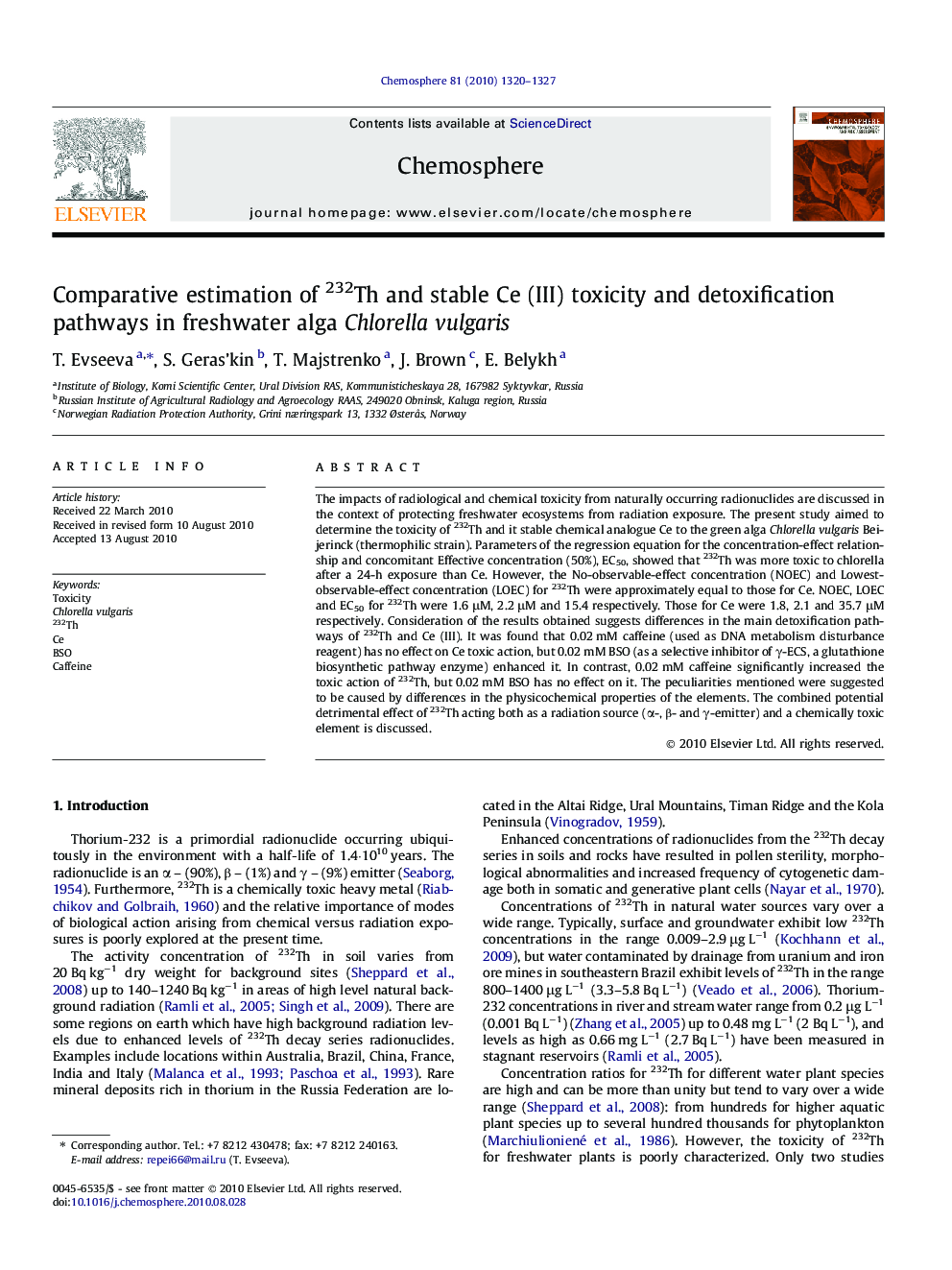| Article ID | Journal | Published Year | Pages | File Type |
|---|---|---|---|---|
| 4411383 | Chemosphere | 2010 | 8 Pages |
The impacts of radiological and chemical toxicity from naturally occurring radionuclides are discussed in the context of protecting freshwater ecosystems from radiation exposure. The present study aimed to determine the toxicity of 232Th and it stable chemical analogue Ce to the green alga Chlorella vulgaris Beijerinck (thermophilic strain). Parameters of the regression equation for the concentration-effect relationship and concomitant Effective concentration (50%), EC50, showed that 232Th was more toxic to chlorella after a 24-h exposure than Ce. However, the No-observable-effect concentration (NOEC) and Lowest-observable-effect concentration (LOEC) for 232Th were approximately equal to those for Ce. NOEC, LOEC and EC50 for 232Th were 1.6 μM, 2.2 μM and 15.4 respectively. Those for Ce were 1.8, 2.1 and 35.7 μM respectively. Consideration of the results obtained suggests differences in the main detoxification pathways of 232Th and Ce (III). It was found that 0.02 mM caffeine (used as DNA metabolism disturbance reagent) has no effect on Ce toxic action, but 0.02 mM BSO (as a selective inhibitor of γ-ECS, a glutathione biosynthetic pathway enzyme) enhanced it. In contrast, 0.02 mM caffeine significantly increased the toxic action of 232Th, but 0.02 mM BSO has no effect on it. The peculiarities mentioned were suggested to be caused by differences in the physicochemical properties of the elements. The combined potential detrimental effect of 232Th acting both as a radiation source (α-, β- and γ-emitter) and a chemically toxic element is discussed.
